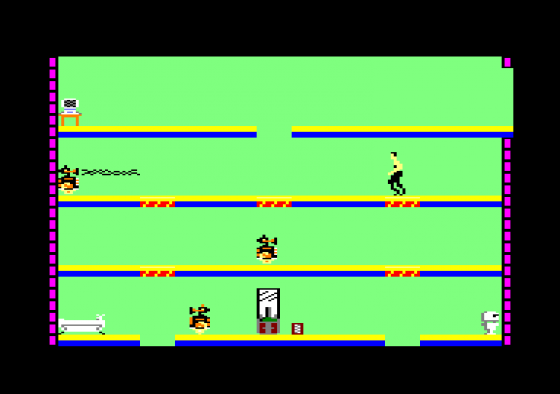
Amstrad Action
 1st October 1986
1st October 1986
Categories: Review: Software
Author: Bob Wade
Publisher: Epyx
Machine: Amstrad CPC464
Published in Amstrad Action #13
Impossible Mission
I'll spare you the cliches about the late arrival of the game; suffice it to say that I'm relieved it's finally here. By now many of you will know what the game is about, and the crucial question is whether its age has made its gameplay outdated.
The mission isn't impossible but it's certainly one of the toughest you'll come across, involving not only some great joystick action but demanding puzzles as well. It's set in an underground complex of 32 rooms, connected by lift shafts and corridors. Hidden in the 32 rooms are 36 password puzzle pieces that have to be collected and put together to form a nine-letter password. This password will enable you to prevent the destruction of the world - heavy, man!
All of the rooms are viewed in 2D and contain five basic elements: platforms which you can run on, lifts to get between platforms, computer terminals, furniture and robots. Each room always has the same platform layout, furniture and number of robots, but the arrangement of the rooms in relation to each other and the behaviour of each robot varies with every new game.
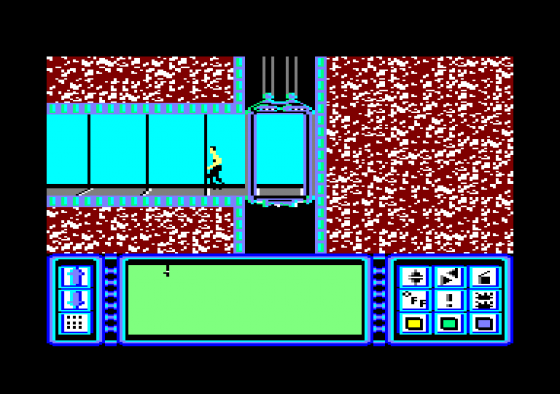
Your character runs around the rooms and can somersault to avoid gaps in the floor and robots. He has to find and put together the 36 puzzle pieces within six hours, real time. However, every time he dies he loses ten minutes of the time avail-able. and that can quickly eat into the time remaining. He searches the furniture while standing in front of each item for a set time; it then disappears and a message tells you what he found there.
If there is no puzzle piece then there may be a robot snooze, lift initialisation (which resets the position of lifts in a room) or nothing at all. The robot snooze deactivates the robots for a time and stops them killing your character with their electrical discharges or by running into him. When they're reactivated, though, they return to their preset movement patterns, and might ignore your character's presence, react to him on sight, sense his being in the room, shoot or speed up. The only way to find out how each one behaves is to watch it care-fully and be ready for the various different reactions.
There are two code rooms, in addition to the other 30, and in these you can gain additional robot snoozes and lift resets. You are played a series of notes (one note more every time you succeed) which have to be played back in ascending order to gain a code.
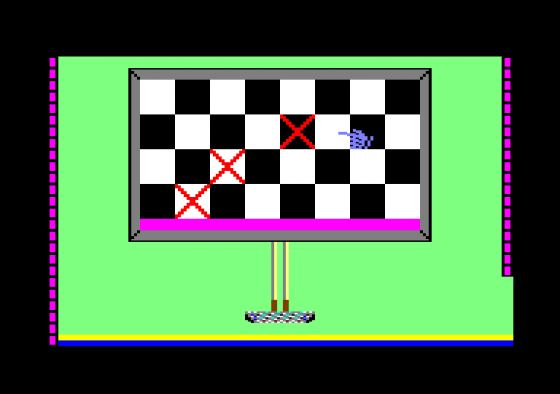
Once you've collected a number of puzzle pieces you can operate a computer to attempt to put them together. Four pieces will link up to make a code that gives you one of the nine letters in a password. The pieces fit together like a complicated jigsaw and at first it may take a long time to form complete codes. However, as you become familiar with the shapes they form and recognise individual pieces, it becomes easier.
Searching the rooms, avoiding the robots and putting together the puzzles is very absorbing. It isn't quite as exciting as it might have been a year ago but it still has all the essential addictive gameplay that's needed. The animation and graphics are adequate although nothing more, and the sound is limited to a few effects like the noise of footsteps as you run and the buzz of robots shooting. It's a shame it's been a long time coming but it's still an excellent game.
Second Opinion
This one ought to be dated, but it isn't - it's just good stuff. There are an awful lot of 'search the furniture' games around at the moment, but its tough puzzles and timing problems put it streets ahead of them. Addictive, challenging and fun.
Third Opinion
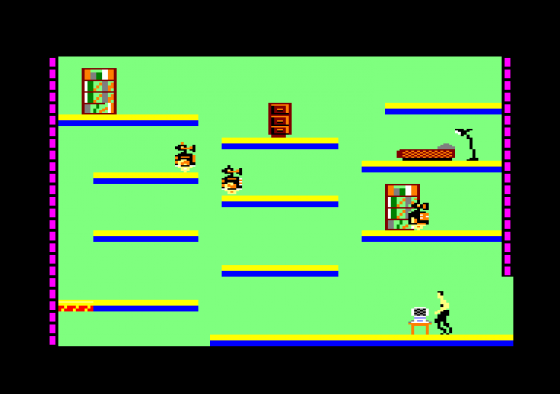
Similar action to Mission Elevator, Nexus and Max Headroom, but Impossible Mission is everything those games should have been. The graphics are great, the action spot-on, and the puzzling element just right. Buy it now!
First Day Target Score
3,000.
Green Screen View
The puzzle pieces are colour-coded, but there's no real problem telling the colours apart - and that's what counts.
Good News
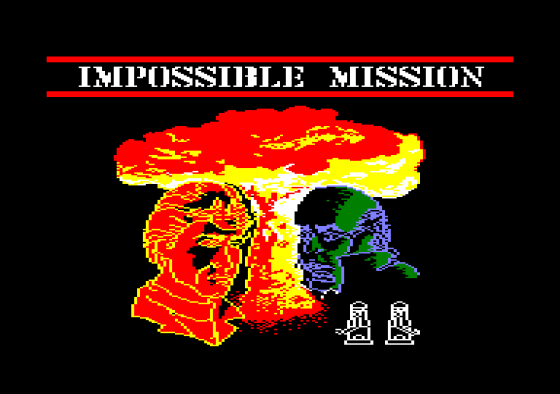
P. 30 different devilish rooms.
P. Robots and platforms present testing problems in timing and accuracy.
P. Puzzles are tough but absorbing.
P. Code rooms, snoozes and somersaulting are good touches.
P. Still a classic game despite its late conversion.
Bad News
N. Graphics and animation aren't that great.
Puzzle Problems
To start with you may hove trouble working out exactly how to fit the puzzles together, so here are some extra tips to help you get started.
The pieces appear two at a time In a memory window and can be moved from there to another main window. At first they just look like rectangles with odd coloured shapes in them, but when fitted together they take on more uniform shapes. The key to understanding how they work is experimentation - you needn't worry about making a mess of it because once a piece of code is collected you can't lose it.
The pieces come in three colours fit together only if the same colour. You can alter the colour of any piece or flip it upside-down and back-to-front to try to get it to match.
When you want to fit them together just try overlaying one on top of the other and the computer will tell you whether they fit or not. Sometimes two pieces will fit together but aren't supposed to, so that two others to fill the rest of the code are missing - but you'll find that only out by trying everything possible.


